Ida Kohlmeyer Exhibition Reviewed in The New York Times by Roberta Smith
April 2, 2020 - Roberta Smith for the New York Times
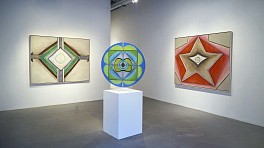
April 2, 2020 - Roberta Smith for the New York Times
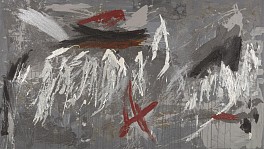
March 30, 2020 - Berry Campbell
Ida Kohlmeyer
VIDEO: Virtual Exhibition Walkthrough
Women of Abstract Expressionism
Inventory Highlights
View Exhibition
Ann Purcell
Upcoming Exhibition: Kali Poems
View Works by Ann Purcell
Judith Godwin
Forbes Magazine: Add to Your list of '5 Women Artists' at These Museums Around The United States
by Chadd Scott
Charlotte Park
Client Testimonial:
"Extremely gratifying to see Paul Kasmin Gallery's eye-opening summer show, Painters of the East End reviewed by Erin Kimmel in this month's Art in America . And smiled extra wide that AbEx talent Charlotte Park is written up in the same paragraph as — and holds her own with— Joan Mitchell. 'Park's virtuosic oil and crayon compositions (ca. 1965 and 1967) feature dendrite-like configurations in a palette of bright pinks, yellows and blues that appear frozen mid twist.' Ten years ago Christine Berry, owner of one of the most engaging and provocative galleries in Chelsea, Berry Campbell, thankfully introduced me to the work of Charlotte Park, who died in 2010 at age 92 in Montauk, where she lived and painted. She was the wife of artist James Brooks, supporting his career at the expense of her own, and dear friends and neighbors of Jackson Pollock and Lee Krasner."
-Adam Beckerman
View Works by Charlotte Park
Yvonne Thomas
Eazel Interactive Exhibition | Yvonne Thomas: Windows and Variations (1963-1965)
Susan Vecsey
blue.
Nassau County Museum of Art, Roslyn Harbor, New York
View Works by Susan Vecsey
Jill Nathanson
LINEA: Studio Notes from the Art Students League of New York
Artist Snapshot: Jill Nathanson
Perle Fine
What We See, How We See
Through April 2021
Parrish Art Museum, Southampton, New York
View Works by Perle Fine
Joyce Weinstein
Postwar Women
Curated by William Corwin
The Art Students League, New York
View Works by Joyce Weinstein
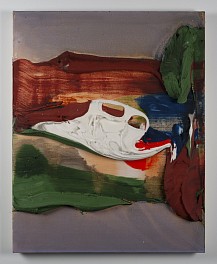
March 21, 2020 - Berry Campbell
In this video, James Walsh gives an artist talk for his exhibition, James Walsh: THE ELEMENTAL.
Read More >>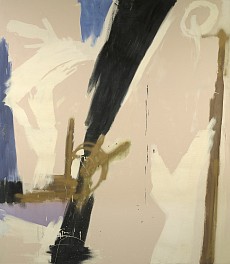
March 21, 2020 - Berry Campbell
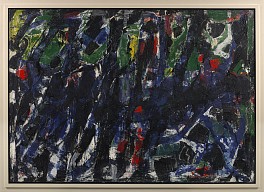
March 21, 2020 - Berry Campbell
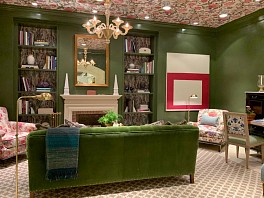
March 19, 2020 - Berry Campbell
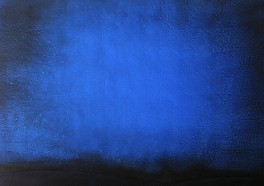
March 14, 2020
March 14 - July 5, 2020
Nassau County Museum of Art
Roslyn Harbor, New York
What color means more to us than blue? Even among the primaries, the color of the sky and sea commands a privileged place, by far the most popular hue in the spectrum according to surveys on every continent. Blue casts its spell, pushing beyond symbolism to a deeper emotional level, drawing us into its pure and distant mysteries. Every artist goes through a “blue period,” from the Mediterranean blues of Matisse and Yves Klein to the haunting auras of Redon. Blue has been holy to Egyptian, Hindu, Chinese and Western traditions. Its physical sources (cobalt, ultramarine, cerulean, indigo, lapis lazuli, cyan) are a catalogue of valued materials that rival gold itself. As this exhibition exuberantly proves, the power of blue transcends art history. Poets, filmmakers, musicians and designers have tapped its resonant appeal. The most original music in America (home of bluejeans, “democracy in fashion”) is the blues. We are turning the entire museum over to the multi-media exploration of blue in many incarnations. It spans history and geography, from the precious lapis lazuli of antiquity to paintings, photographs, sculpture, ceramics, cyanotypes, and fashion. As Miró said, “This is the color of my dreams.”
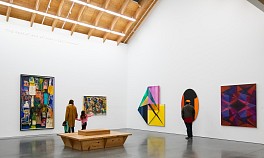
February 25, 2020 - Parrish Art Museum
Alicia Longwell on Women Artists in What We See, How We See
February 28, 6 pm - 7:30 pm
Alicia Longwell, the Lewis B. and Dorothy Cullman Chief Curator, Art and Education, highlights women artists in this seven-part exhibition that contextualizes the artists’ work through the lens of how they see and interpret the world around them.
VENUE
Parrish Art Museum
279 Montauk Highway, Water Mill, NY 11976 United States
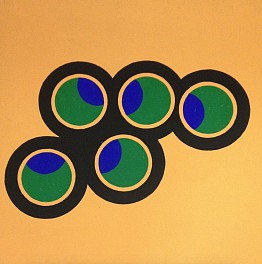
February 25, 2020 - Kim Uchiyama for Two Coats of Paint
Contributed by Kim Uchiyama / “Specific Forms” at Loretta Howard Gallery illuminates a particular moment in 20th century art history where works created by a variety of artists occupied the space between the then diverging ideologies of a young Donald Judd and those of the older critic Clement Greenberg. Saul Ostrow has curated a finely-tuned exhibit that demonstrates the highly individual modes of thought that were at play during this transitional time, ideas distinct from the critical positions of Minimalism, Pop and Color-field.
The movement known as Abstract Expressionism – a “movement” itself comprised of highly individualistic artists – can be seen in retrospect as the physical and psychological response to the global tensions of World War II. Mary Gabriel, in Ninth Street Women, her invaluable contribution to understanding the full scope of this era, emphasizes the war – and the lead up to war – as the underpinning for the formation of a new American art which would reflect the exigencies of the moment. The works in “Specific Forms” came about because these times had changed. Post-war America lacked the angst of the 1940s and 1950s, and was increasingly replaced in the 1960s and 1970s by an art that sought to look to itself reflexively, on its own terms – the thing being the thing itself.
In an era characterized by an implicit questioning of authority and established norms, these fourteen artists sought to break the mold of existing “-isms” and are seemingly preoccupied in creating a new consciousness via their art. The resulting works are highly specific unto themselves and characterized by strikingly individualistic terms for their existence.
Read More >>